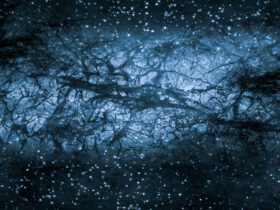The world’s most powerful space telescope ever built, meaning NASA’s James Webb Space Telescope (JWST), released its first full-color images of the distant Universe yesterday, July 12. But that wasn’t all the new stuff that JWST has in store for the world!
New photos of Jupiter and some of its moons emerged online, and they were taken by James Webb itself. We can see the gas giant along with three of its numerous natural satellites. There is Europa, the sixth largest moon of the Solar System. We can also see Metis and Thebe, two moons that are very small.
umm who else saw this in the commissioning report document??
https://t.co/AzwQCf6rat pic.twitter.com/nq13fxdsAM
— Erin M. May, PhD (@_astronomay) July 12, 2022
The commissioning report explains:
Observing a bright planet and its satellites and rings was expected to be challenging, due to scattered light that may affect the science instrument employed, but also the fine guidance sensor must track guide stars near the bright planet,
These observations verified the expectation that guide star acquisition works successfully as long as Jupiter is at least 140″ away from the FGS, consistent with pre-flight modeling.
Jupiter is the biggest planet in our Solar System – it’s so huge that 1,300 planets the size of Earth could fit inside. But the huge size of the gas giant is clearly in our advantage. How is that possible? Simple: a much bigger object in space automatically means a much stronger gravity. Many large comets and asteroids are attracted by Jupiter, and thus the gas giant is protecting our planet from possible impacts. There’s a pretty considerable possibility that humanity would have never evolved if Jupiter hadn’t existed in our Solar System.
All of the other images showcased by the James Webb Space Telescope (JWST) were from the distant Universe: the Carina Nebula, the Southern Ring Nebula, the SMACS 0723 cluster, Stephan’s Quintet, and WASP-96b.













Leave a Reply